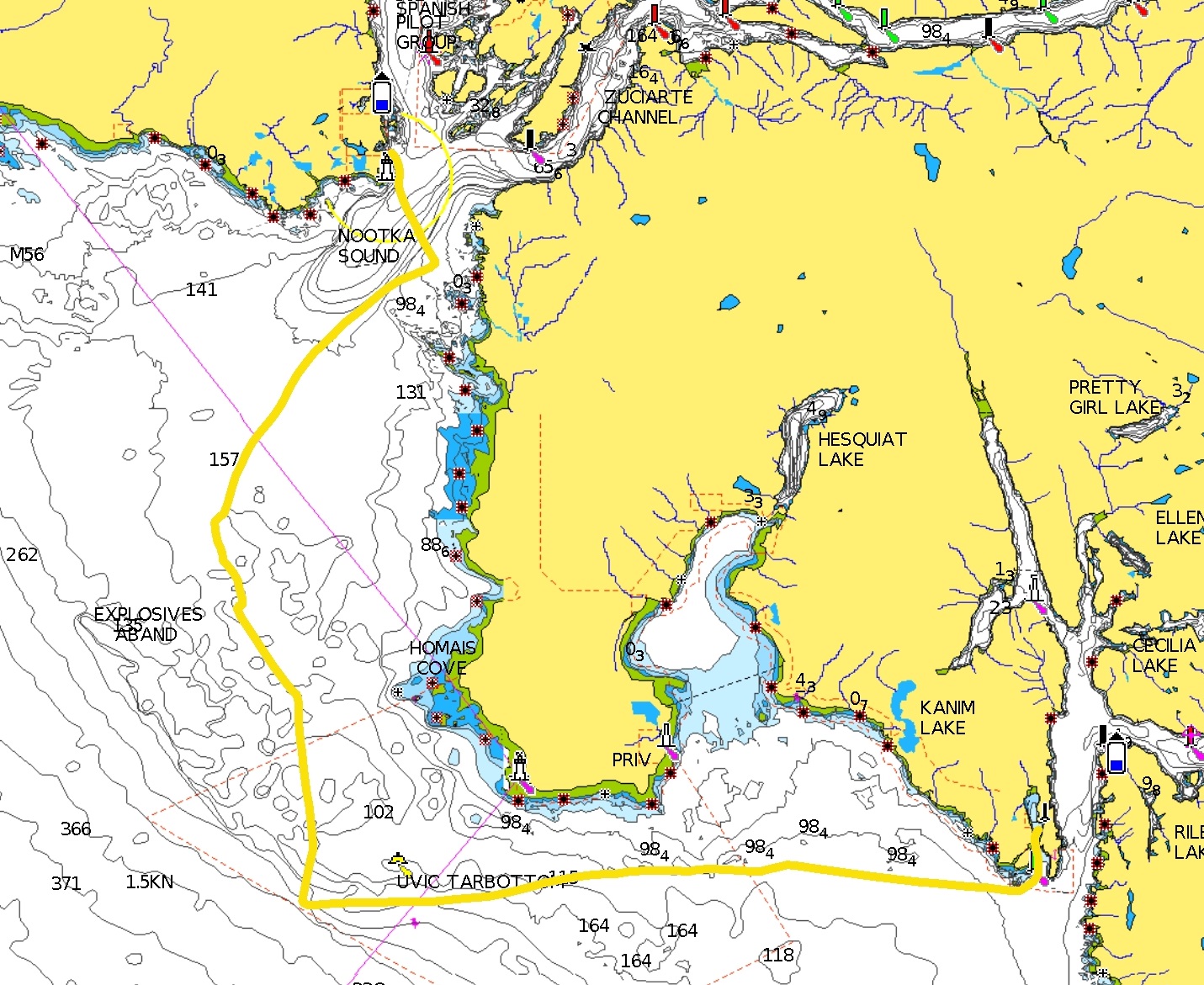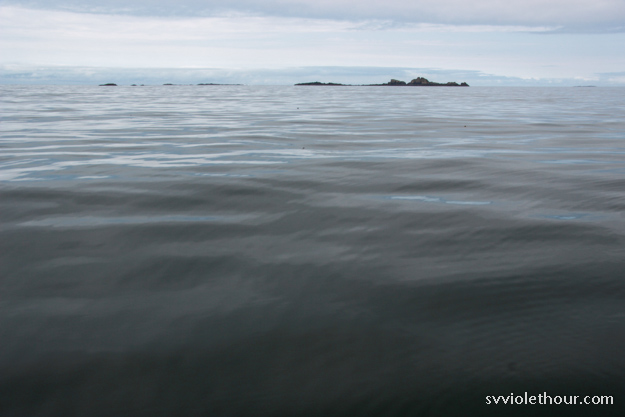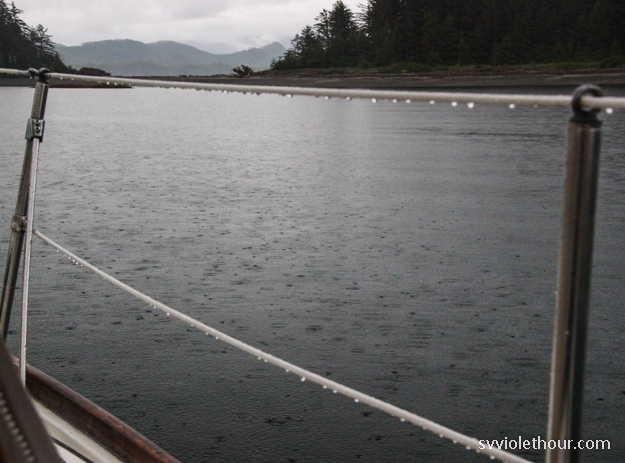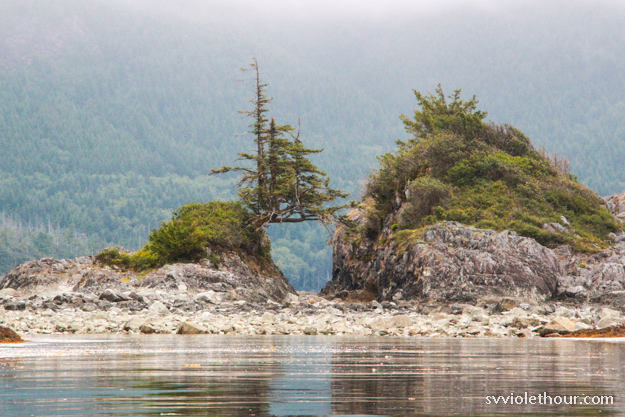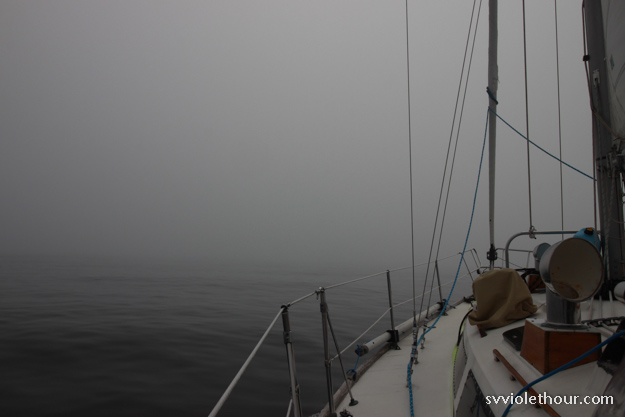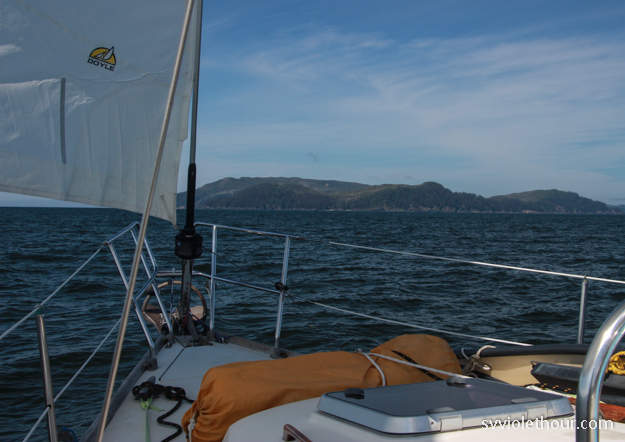In the last week (July 13-20) we’ve sailed from Nootka Sound to Clayoquot Sound and then on to Barkley Sound, the last stop on our trip down Vancouver Island. As we left Clayoquot Sound on July 18, summer finally showed up and we’ve had northwest winds with sun and blue skies most of the time since then. We’ve still had some rainy southerlies sweeping through about every 4-5 days, but they’re usually short-lived.
Needless to say we’re reveling in the summer sailing experience now – shorts and t-shirts, ample solar power for cold beverages, paddleboarding, swimming, and rigging up the hammock between mast and forestay.
Rounding Estevan Point: Nootka Sound to Hot Springs Cove
Getting out of Nootka Sound is always hard. The entrance to the sound is shaped like a funnel, and it funnels both wind and current at the constriction point. Westerly ocean swell tries to roll into the entrance, and with an opposing ebb current the waves can get quite steep and sharp. And going out is always an upwind sail, because the wind inflows.
Fortunately we had a pretty good day for it, with light south wind (8-10 kts) – which comes pretty much from the west until you make Estevan Point. The waves were choppy and pound-happy but we had timed our departure to near slack current so they weren’t nearly as bad as they could be.
It was a long day (~9 hours) but a fun one. We think we saw an ocean sunfish near Estevan Point. They’re a very rare creature that we’ve never previously seen. They can grow quite large and have two fins, which wave alternately above the water.
